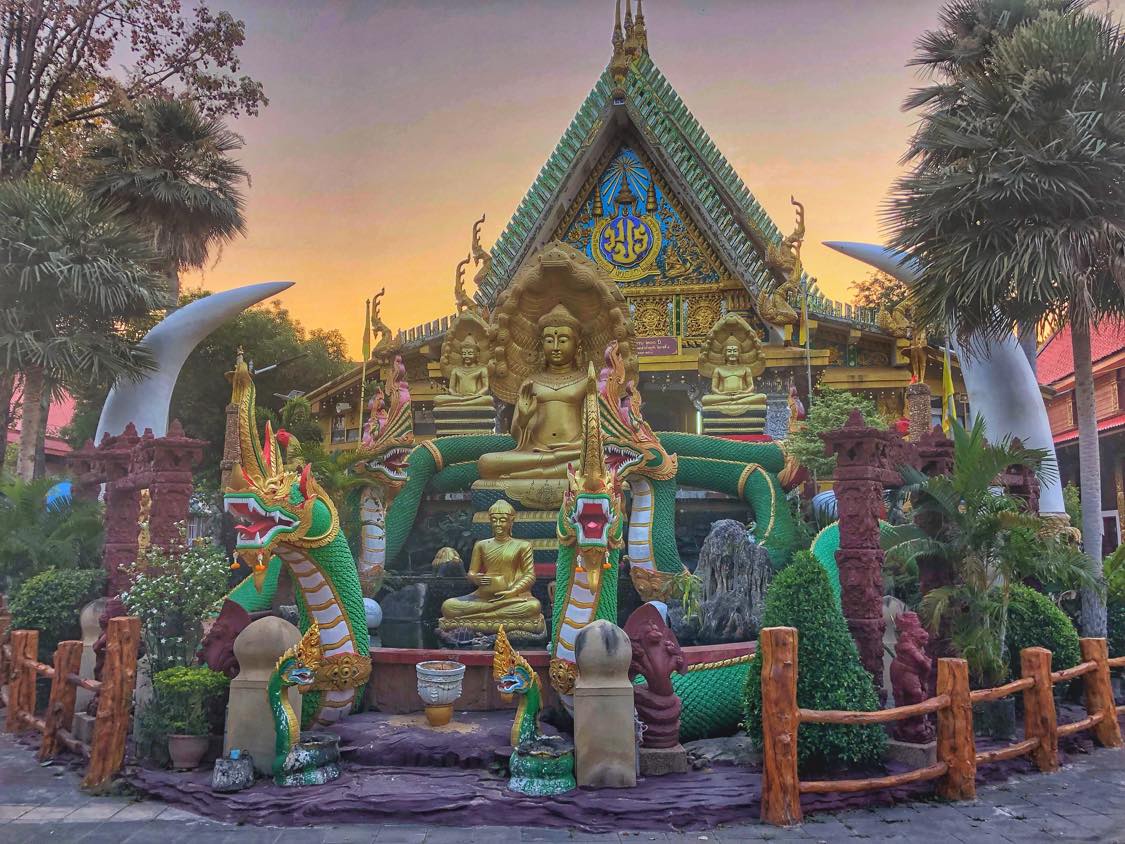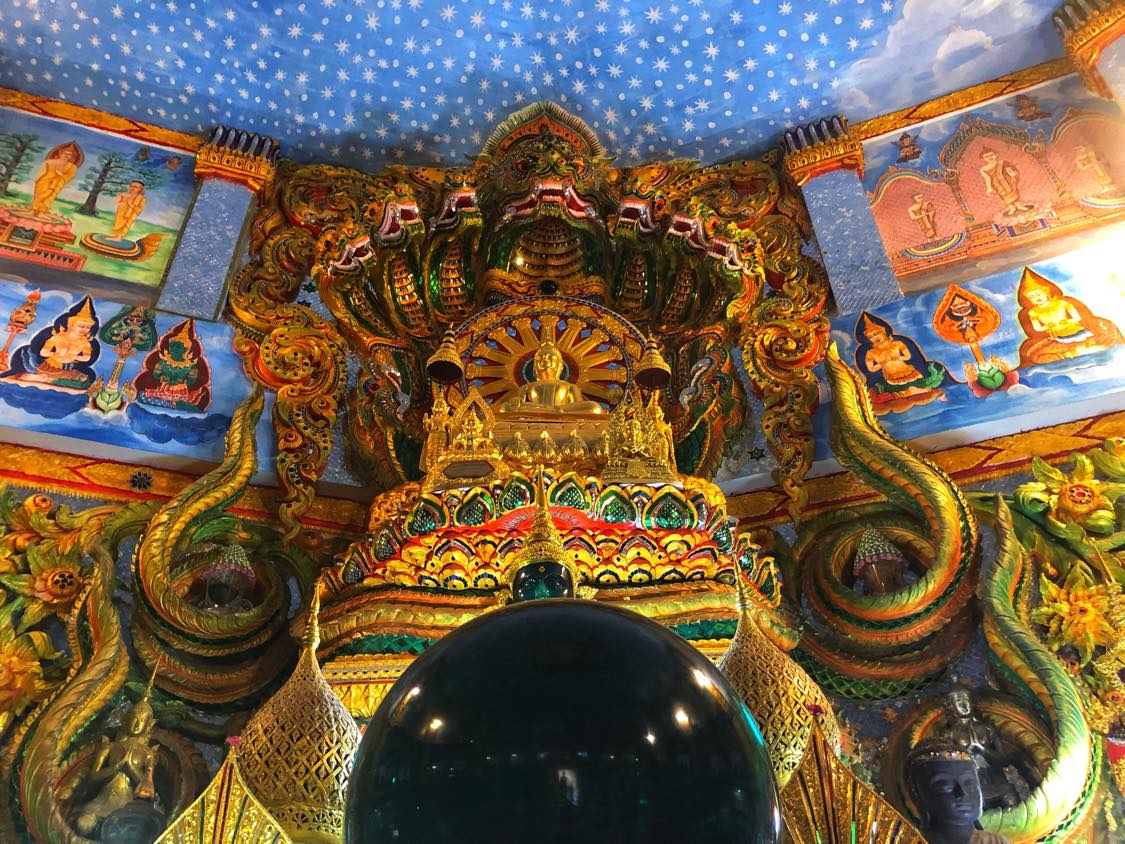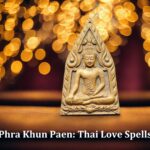Mystical Thailand: Visiting Thai Temples like a Mystic

In Thai Buddhism, as with every religion, there are different levels of understanding, different schools of thought — and by this we don’t mean the difference between Theravada Buddhism (Thailand’s official religion) and Mahayana Buddhism, but rather the manner in which people approach sacred texts and iconography.
The most profound interpretations of Buddhism in Thailand are found among mystic monks, who rarely (if ever) write down or publish anything, but pass down their wisdom solely by word of mouth to their followers. Much like the Buddha passed down the Dharma only through his spoken sermons.
The universal theme of the mystic tradition in Thai Buddhism is similar to that of Christianity, Judaism, and Islam. That is: what is without is within (and vice versa). The realization of this mystical truth is what led the Buddha to say: “You are what you think. All that you are arises from your thoughts. With your thoughts you make your world.”
The mystical approach opens up an entirely new world when visiting Thailand’s temples. For when you do, you no longer see temples as religious places filled with objects to be prayed to by the faithful, but as sacred places that reflect the eternal verities of the spiritual life — that which is found within all people, regardless of their religion or belief.
In other words, when you visit a Thai temple, it should be a voyage of self-discovery. And since this spiritual voyage is never ending, you’ll always discover something new about yourself at every temple you visit — as long as you walk the path of the mystic. Here are some stepping stones to get you started.

Temple grounds: The entire temple grounds, and everything it contains, is symbolic of the grand spiritual center that exists within us all, that fertile ground which is immune to any material misfortune, and is a source of unending beauty and joy. When you see a Thai temple being meticulously swept and cared for by monks, you should ask yourself how you have been tending to your spiritual life. What important areas have you allowed to gather dust, cobwebs, and detritus?
Temple Guardians: Every Thai temple has guardians at the entrance — be they Naga Dragons, Singha Lions, or Yaksha Giants. These guardians serve as a reminder to you that your temple (i.e. spiritual center) should be rigorously guarded against intruders. These include destructive habits, thoughts, and people — indeed, any habit, thought, or person who is not bringing out the best in you and those who surround you.
Buddha Statues: Statues of the Buddha at Thai temples represent the enlightened consciousness that we all seek to attain, the awakening of the Child of God within us. When a mystic prays before a statue of the Buddha, they do not pray TO the Buddha, but rather they envision themselves as having achieved perfect enlightenment, with perfect kindness, love, patience, wisdom, strength, and equanimity — for as you thinketh, so you are.
The Naga Buddha: At most temples in Thailand you will see a special statue of the Buddha with a nine-headed Naga serpent rising above him as a protector (such as the famous sculpture at Wat Tham Pha Daen). This statue depicts the moment when a Great Naga named Mucalinda protected the Buddha from a violent storm before he achieved enlightenment. It serves as a reminder to us that we are not alone when walking the spiritual path — that we can expect divine support in the most unexpected and sudden ways, the closer we get to our goal, as long as we don’t give up.
Sometimes protectors appear in our lives and we don’t even realize them. Mucalinda, as well as the Buddha’s protector Phra Mae Thorani (the Earth Goddess), should make us pause and reflect on those who have appeared in our lives as protectors without our notice and gratitude.
The Bodhi Tree: Many temples in Thailand have a Bodhi tree several generations old growing on the grounds. This sacred tree reminds us that we are not floating through life but anchored here by the deep roots of our ancestors: who lived, loved, and struggled before us, whose DNA is coursing through our veins, who talk to us via the eternal subconscious mind and are rooting for us to succeed.

Magic & The Supernatural in Thailand
Thai Buddhists are sometimes criticized for having an excessive belief in magic and the supernatural, as seen in their love for lucky amulets, spirit houses, and sak yant tattoos. Many don’t understand why Buddhist monks take part in these practices, and how it correlates with Buddhism. Thai monks who have mystical beliefs take part in these traditions not because they believe that such amulets or tattoos are “lucky” in themselves (even if some Thais believe that).
They view amulets and tattoos as capable of granting luck or good karma, but only when they serve to remind the wearer of their spiritual center, the wisdom of the Dharma, and their commitment to follow the noble eight-fold path of right views, right aspiration, right speech, right action, right livelihood, right effort, right mindfulness, and right concentration. Even if only a small percentage of those who possess these amulets or tattoos use them in this proper manner (as divine reminders for virtuous living), their making will have been worthwhile.
- Affirmations in Buddhism & Thailand - June 7, 2025
- Speak Thai Naturally Without the Gymnastics - April 20, 2025
- The Best Learn Thai Podcast and YouTube Channel - April 10, 2025




